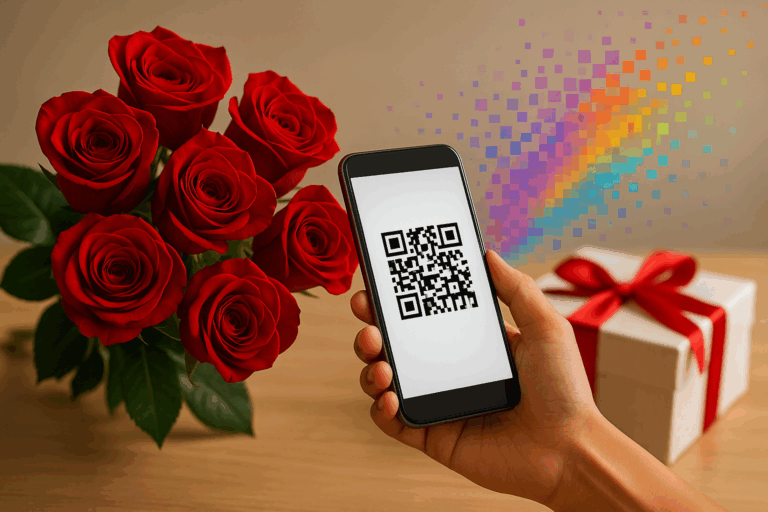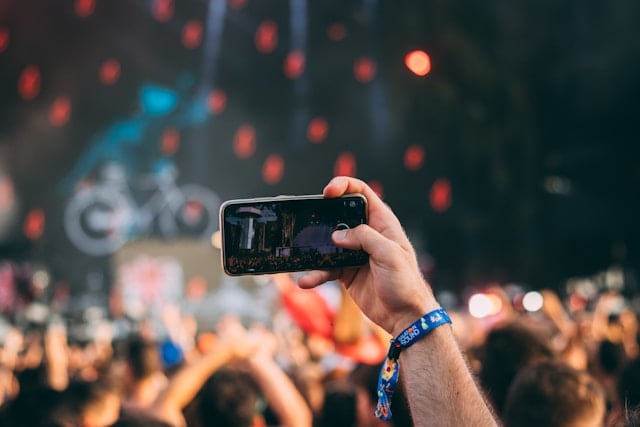Creator Economy Live East 2025 brought together brands, agencies, and creator economy leaders for the ultimate influencer marketing event. Whether you’re preparing to attend Creator Economy Live West 2026 in Las Vegas (January 13–14) or catching up on learnings from the East edition, the key themes shaping the creator economy in 2025 have lasting implications. Many of the insights that resonated at Creator Economy Live West and East are the very trends driving our industry today. These will be front and center again in Las Vegas. From the ROI of user-generated content (UGC) to the rise of AI, authenticity, micro-influencers, and long-term creator partnerships, here’s what brand and agency marketers need to know.
The creator economy continues accelerating: U.S. creator marketing ad spend is projected to reach nearly $44B in 2026. This is an 18% jump from 2025. Analysts estimate the global creator economy will reach $480B by 2027. Brands aren’t experimenting anymore; they’re scaling.

Authentic, User-Generated Content Delivers Real ROI and Trust
Why UGC Outperforms Traditional Creative
It’s no secret that authentic content created by users and everyday creators is outperforming polished brand creative. UGC, customer reviews, unfiltered videos, and fan posts resonate as more genuine and relatable, driving engagement and conversions. In fact, campaigns that incorporate UGC see significantly higher performance. One study found engagement rates jump 50% on social campaigns that include UGC. Additionally, brands that integrate UGC into their purchase pathways saw an average 10% lift in conversion rates. UGC-based ads are often cheaper and more effective. They typically cost roughly half as much as traditional ads while earning up to four times higher click-through rates.
Why Real, Unfiltered Content Drives Trust
Why is UGC so impactful? Because consumers trust content that feels real. Nine in ten consumers value authenticity in advertising. People are 240% more likely to consider UGC authentic compared to brand-created content. Recommendations from “people like me” carry huge weight. 84% of consumers trust peer recommendations over other forms of advertising. In practice, that means a friend’s post or a micro-influencer’s honest review can often spur action more than a glossy official ad. It’s word-of-mouth at scale. Unsurprisingly, social media today is largely driven by UGC and peer influence. According to recent surveys, 87% of consumers say that UGC influences their purchase decisions.
Major Brands Are Leaning Into the UGC Aesthetic
Major brands have taken notice. Even polished retailers and media companies are leaning into the “UGC aesthetic”. They are intentionally making content feel less like ads and more like organic posts. Fashion brands are showcasing real customer photos on product pages. Entertainment giants are mimicking fan-made content. The shared strategy is to capture the authentic vibe that draws audiences in. The reason is simple: UGC outscores professional content in both paid ad performance and audience sentiment. When marketing feels like genuine storytelling or personal recommendation, consumers engage more and develop stronger trust in the brand.
What Marketers Should Do Next
For marketers, the takeaway is clear: prioritize authenticity over perfection. Encourage and leverage user-generated videos, reviews, and testimonials. BrandLens, for example, makes this process seamless by enabling organizations to guide and collect authentic videos at scale. All this without the need for apps or complicated workflows. Incorporate influencer content that feels real and unscripted into your campaigns. By doing so, you not only boost engagement but also tap into a powerful driver of sales. One report notes that UGC is 8.7× more impactful than influencer-produced content. It also found it to be 6.6× more impactful than branded content in influencing purchasing. In short, authentic UGC is now a proven ROI engine, not just a feel-good add-on.
More brands are now treating customers as creators themselves. Encouraging fans and buyers to share experiences in unfiltered videos or posts, turning ordinary customers into powerful, trust-driving content partners.
Micro-Influencers and Niche Communities Trump Follower Counts
Another trend that has crystallized in recent months is the shift from mega-influencers to micro- and niche influencers. Rather than chasing the biggest follower counts, brands are investing in smaller creators who command tight-knit, highly engaged communities. Why? Because micro-influencers often deliver much higher engagement rates and trust relative to their audience size. As one industry expert put it, these creators “bring a level of authenticity and trust that’s hard to replicate at the macro level”. Their recommendations feel like advice from a friend, which audiences are more likely to act on.
Data backs this up. Studies have found that smaller creators yield 2.4× to 6.7× more engagement per post than big-name influencers. Industry data from late 2025 shows micro-influencers now often deliver 3 to 4× higher engagement per dollar spent versus macro influencers, making them an increasingly efficient and scalable investment for 2026 campaigns. And it’s not just engagement; the authenticity translates into conversions. 60% of consumers say they trust creators who feel relatable and authentic, far more than they trust celebrity endorsers. In practice, a micro-influencer’s product mention in a niche community (e.g. a fitness vlogger recommending a supplement) can drive more actual sales than a generic post by a superstar with millions of disengaged followers. It’s the quality of the connection that matters, not sheer quantity of followers.
Brands have noticed that mid-tier “lifestyle” influencers are feeling the squeeze, as marketers shift budgets toward micro and niche talent. In the first half of 2025, many advertisers became more selective—prioritizing clear return on investment over sheer reach. Simply put, if a creator can mobilize a dedicated niche and drive them to try a product, that creator is valuable to brands. By contrast, paying purely for a famous name to get eyeballs (but little meaningful action) is falling out of favor.
Authenticity is the currency in this new influencer landscape. As Lindsey Gamble, a creator economy expert, noted, what worked yesterday won’t deliver results tomorrow. Modern consumers, especially those in Gen Z, are increasingly skeptical of overly produced ads. They crave content (and creators) that keep it real. This is why micro-influencers, community leaders, and “creator next door” personalities are thriving. Their content feels genuine and their smaller scale allows for personal interaction, which builds trust. For brand marketers, the implication is to rethink influencer rosters: Bigger isn’t always better. It can pay off to partner with a constellation of micro-creators who align tightly with your brand niche or values, rather than one-size-fits-all celebrity influencers.

Long-Term Partnerships and Data-Driven Strategies Over One-Off Campaigns
From Campaigns to Always-On Partnerships
A major insight resonating across the creator economy is that successful brands treat influencer marketing as a long-term, strategic program, rather than one-off campaigns. In the early days, many influencer activations were flash-in-the-pan: a single sponsored post here, a short-term campaign there, each measured in isolation. Now, leading brands and agencies are evolving toward always-on creator partnerships, performance-based incentives, and rigorous measurement to truly integrate creators into the marketing funnel.
At Creator Economy Live West in Las Vegas, one clear message was the need to move beyond vanity metrics. ‘Stop the one-size-fits-all KPIs’ became a clear theme of the past. In a conference case study, Albertsons’ marketing team shared a new approach. They moved away from evaluating influencers based on a single metric, such as organic reach. Instead, they mapped creators to the stages of the customer journey where each one performs best. By testing an influencer’s content at different funnel stages, they discovered surprising strengths. For example, a beauty creator who underperformed in top-of-funnel reach turned out to drive a 14× ROAS when her content was used in retargeting ads, and even reactivated lapsed customers at over 48% efficiency. Insight: that influencer excelled at conversion and re-engagement, even if her organic posts didn’t go viral. Without a data-driven, long-term view, the brand might have written her off after one campaign and missed out on a highly profitable partnership.
This illustrates a broader trend: brands are shifting from one-off influencer deals to ongoing, performance-driven partnerships. Marketers increasingly structure deals to reward creators for conversions and sales (e.g. via affiliate links, revenue share, or hybrid payment models) rather than paying purely for a single post’s reach. In practice, more brands are now committing to long-term, serialized collaborations, working with creators over many months to build narrative arcs, deepen trust, and maximize lifetime customer value rather than treating each campaign as a one-off. According to experts, “what gets measured gets improved”, so brands are implementing more robust tracking – using custom UTM links, promo codes, and even advanced AI-powered tools – to attribute revenue or leads to specific creator content. With better measurement in place, it’s easier to justify larger, longer-term investments in the creators who truly drive ROI.
Another key aspect of this evolution is community-building and continuity. Brands are moving away from treating influencers as interchangeable ad channels. Instead, they cultivate relationships with a core group of creators who become genuine advocates over time. Think brand ambassadors who collaborate for years, not just one-off Instagram takeovers. This shift has been described as moving from “influencers as amplifiers” to “creators as strategic partners” who contribute to brand storytelling, product feedback, and customer loyalty. Long-term partnerships yield benefits on both sides: creators get steady support to grow their personal brand, while the company gains a trusted voice that audiences come to recognize and trust. Crucially, consistent collaborations also make influencer content feel more authentic – a creator who has loved your product for a year is far more convincing than one who posts about it once and disappears.
To enable this, forward-thinking teams are adopting a full-funnel, test-and-optimize approach to influencer campaigns.
Evergreen UGC with Built-In Measurement
Another example is running evergreen UGC campaigns directly with your own consumers through QR codes on packaging or simple shareable links. These long-term activations can be featured on product packaging, inserts, or follow-up emails, inviting customers to share their experiences over time.
Because no app is required and the experience can be branded with on-screen guidance, brands can launch campaigns quickly and integrate them into their operations. The result? Increased consumer engagement, stronger social reach, and a steady stream of content for social, creative, and brand teams. One framework shared at the conference was “T.O.D.D.” – Test, Optimize, Drive, Done. In practice, that means starting by testing many creators and content variations. Use data to optimize and refine what works. Amplify the best content through paid media to drive results at scale. Only then should you conclude a campaign and roll the learnings into the next iteration. Importantly, successful brands combine organic and paid influencer strategies. Organic creator content builds brand equity, credibility and engagement (top-of-mind awareness), while paid promotion of influencer content ensures you hit conversion goals and reach new customers. The synergy of both creative authenticity and targeted amplification can dramatically improve long-term outcomes.
For brand and agency marketers, the message is clear: influencer marketing is maturing, and you must evolve with it. Adopt a long-term mindset focused on lifetime value, not just campaign-by-campaign ROI. Break down the silos between influencer marketing and performance marketing – they are becoming one and the same. By treating creators as always-on partners, aligning incentives to outcomes, and investing in proper analytics, you can turn the creator economy from an experimental channel into a core, measurable driver of your business growth.
New Platforms and Tech: From Video Dominance to AI Tools – But Authenticity Remains Key
Video Is Now Primetime
No summary of “what’s next” would be complete without touching on the shifting platforms and technologies influencing the creator economy. One major development is the continued explosion of video content and its expansion onto every screen. YouTube – long a powerhouse on mobile and desktop – recently revealed that Americans now watch *over 1 billion hours of YouTube content on television screens *per day, with connected TVs surpassing mobile as the most popular way to consume YouTube. In other words, creator content has become primetime content. Even older demographics are tuning in; as of early 2025, adults 50+ made up a larger share of YouTube’s TV viewership than Gen Z or young millennials. This blurring of lines between social media and traditional TV presents new opportunities for brands. Marketers can no longer think of online video as ‘just for kids’ or secondary to TV. Increasingly, they are one and the same. Forward-looking brands are already producing social-first ads. They’re partnering with creators to develop content that can live on TikTok and YouTube, and even stream on Netflix or Hulu. Some streaming platforms have even started licensing creator-made series. The takeaway: Video-centric creator content is now mainstream media, and brands should plan accordingly, ensuring their influencer strategies span multiple channels and formats.
Another “next big thing” is the integration of social commerce tools and creator monetization features. Platforms are racing to help creators sell products directly: from TikTok’s shopping features to Instagram’s in-app checkout and YouTube’s merch shelves. Brands are leveraging this by setting up branded creator storefronts and affiliate programs so that creators can act as direct sales channels. The idea is to reduce friction between inspiration and purchase. If a viewer loves a product in a creator’s video, they should be able to buy it seamlessly on the spot. We’re seeing more campaigns structured around influencers driving e-commerce traffic and sometimes with the influencer as a co-creator of the product line. As a result, influencer strategy is increasingly tied to your e-commerce and retail strategy. Success is measured not just in views or likes, but in referral traffic, promo code redemptions, and sales lift. As this trend grows, expect more brands to treat creators like an extension of the sales team, providing them with the tools (and incentives) to genuinely move product.
AI Powered Creator Tools
2025 also saw a surge in AI-powered creator tools. From automated editing and captioning to predictive analytics for performance. Helping brands and creators scale output while preserving authenticity.
Simultaneously, social commerce has accelerated: creators are increasingly functioning not just as storytellers, but as direct sales channels, blurring the line between content, community, and commerce as we head into 2026.
Tech-Powered Creator Strategies Without Losing the Human Touch
Finally, we have to talk about AI and data technology in the creator economy. The buzz around generative AI has hit every industry, and marketing is no exception. In the influencer space, AI is emerging as a powerful assistive force, though not a replacement for human creativity. On the analytics side, AI-powered tools are improving how brands discover creators and track ROI. Machine learning can sift through vast influencer datasets to find the perfect match for a niche audience or predict which creator’s style will drive higher conversion. AI is also helping automate aspects of campaign management (think automated reporting, performance forecasts) and even content optimization (an AI might suggest the best time to post, or even help generate captions). These advancements free up human marketers to focus on strategy and relationship-building. But authentic human creativity remains the heart of influencer marketing. No algorithm can replace the genuine connection a creator builds with their community. That’s why consumers demand authentic connections over polished perfection. This trend is driving the industry’s shift toward performance-driven partnerships without compromising the human touch. In practice, the smart play for brands is to embrace new tech tools to enhance efficiency and insight, but always apply them in service of amplifying real, relatable content, not turning influencers into programmatic ad units.
In summary, the creator economy’s current direction can be defined in a few key phrases: authentic content, community trust, strategic partnership, and measurable impact. Creators are no longer a wildcard in the marketing mix – they’ve become central players, and brands are learning to engage with them in more sophisticated ways. At events like Creator Economy Live West 2026 in Las Vegas and its East counterpart, these themes are front and center. Conversations among brand and agency leaders are less about “should we work with influencers?” and more about how to best integrate creators into every facet of marketing, from brand storytelling and UGC campaigns to performance media and product development.
For brands and agencies, the mandate is to evolve or be left behind. If you attend the conference, listen for how each session ties back to driving real ROI through authenticity and innovation. If you’re reading this after the event, use these enduring insights to audit your own strategy. Are you measuring what truly matters, such as long-term customer value, rather than just impressions? Have you developed a strategy to cultivate genuine brand advocates? What systems do you have in place to leverage the content your customers and fans are already creating?
How ready is your team to experiment with new formats, platforms, and technologies to stay ahead?
The creator economy moves fast, but the core principle remains constant: people crave genuine connections. Brands that embrace that principle, empowered by the latest tools and a smart strategy, stand to gain the most in this new era of marketing. As we look ahead to Creator Economy Live West 2026 and beyond, one thing is certain: creators, brands, UGC and influencers will be more intertwined than ever, reshaping advertising and engagement as we know it. Now is the time to take these lessons to heart and lead with a strategy that puts authentic creator-led content and long-term partnership at the forefront.
Sources
- Creator Economy Live Website – Creator Economy Live West Overview (industry projected to reach $480bn by 2027
- Digiday – Kimeko McCoy – Influencer marketing survival playbook: How the creator economy is shaping up in the back half of 2025.
- Lindsey Gamble’s Newsletter – Lindsey Gamble – 2025 Mid-Year Recap: Six Creator Economy Trends to Know.
- Impact.com Blog – Chad McKenzie – Creator economy vs influencer marketing: Why smart brands are making the switch in 2025.
- Impact.com Blog – Chad McKenzie – 8 Influencer Marketing Trends for 2025: 11 Experts on Increasing ROI.
- The Shelf Blog – Ariana Newhouse – UGC Is Redefining Social Media Marketing in 2025—Here’s How to Leverage It.
- Creator Economy Live (Clarion Events) Blog – Stop One-Size-Fits-All KPIs (May 16, 2025).







